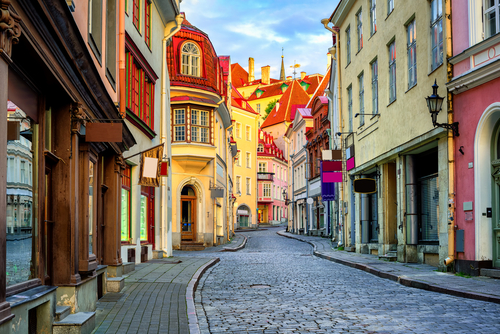Estonia is the fifth most sustainable destination in the world according to the latest annual study from Euromonitor International. Estonia, certified as a Green Destination, has moved up five places in this years’ Sustainable Travel Index 2023, thanks to its approach to sustainable living and nature conservation.
Over half of the country is forested and with some of the cleanest air in the world, sustainability is part of the Estonian ethos, some of the best examples of why Estonia has been rated so highly in the world rankings are:
Tallinn is the European Green Capital 2023 – the beautiful city, with its UNESCO medieval old town and new urban redevelopments outside the city walls, can be explored on foot, by e-scooter or wider areas by eco-friendly trams and buses. A wide range of eco-conscious accommodations are available such as the Hektor Container Hotel and 40 properties have Green Key certification. Including Nordic Hotels and Oru. The versatile range of restaurants offer high quality cuisine, using local ingredients and seasonal menus – most notable is Michelin Green star, zero-waste Fotografiska. There are also public drinking water taps across the city.

An excellent array of sustainably focused shopping is available. Including fashion brand stores Reet Aus and Stella Soomlais; local markets such as the Katariina Guild and the Master’s Courtyard, where craftsmen and designers make products on site; the Baltic Station Market houses local produce, vintage and antique shops and Central Market which offers food and handicrafts.
For a day trip out of Tallinn, take an hours’ drive to the crystal-clear blue lagoon of the submerged limestone Rummu Quarry. Its former prison, now underwater, has been converted into a nature reserve with watersports available on the lake and the area is great for hikes around the mountain, providing stunning panoramic views.
Green Pärnu – Discover the pretty coastal town of Pärnu, on foot or by bike, with its white sandy beach, promenade, and coastal meadow nature reserve. The town has been recognised by Green Destinations* as one of the top 100 sustainable locations in the world. Green in the most literal sense – one-fifth is covered in forest groves, tree-lined avenues, parks, and home gardens. The sea, rivers, beaches, promenades, parks, and forest groves make Pärnu a place with unparalleled natural diversity.
Sustainable Saaremaa – The island of Saaremaa, together with the other western islands, belongs to the UNESCO “Man and the Biosphere” programme. Home to the Vilsandi National Park, 20 protected nature and landscape reserves, and a few dozen nature and hiking trails. 36 flowering orchid species grow on Saaremaa, making the island popular among flower enthusiasts in spring. It is also a paradise for birdwatchers in autumn and spring as birds stop by during their annual migrations. The forest and the sea play a vital role in the diet of the islanders, restaurants often name the farm where ingredients are sourced. Fish caught in the morning is on the menu by lunchtime.
The circular economy is important on Saaremaa, the Lahhentagge Distillery gives new life to city Christmas trees by making them into a tonic. Reed is a traditional local material and is used for roofs in many houses in older villages and innovative local stores are now using it as an alternative material to plastic for products.

Tartu, European Capital of Culture in 2024 – Tartu is the cultural and learning centre of Estonia, is the European Capital of Culture 2024. The theme “Arts of Survival” will highlight the city’s environmentally friendly culture focusing on strong communities and essential skills for living and survival in the coming years. One of the remarkable projects in the Tartu 2024 programme is Curated Biodiversity which promotes the maintenance and restoration of biodiversity in Tartu’s parks and green spaces with activities for different generations.
The city is compact and great for walking and cycling, offering an easy-to-use Smart Bike Share with over 750 bicycles or use the public bio-gas buses to explore. The Smart Bike Share and bio-gas buses can be combined as both ticketing systems use the same card.
Each district of the city has diverse architecture, as part of the EU Smart City project, apartments built in the 1960s were turned into energy-efficient and environmentally friendly buildings and given a visually attractive appearance in-order to create a unique art-based urban space in the centre of Tartu, making the living environment happier and livelier.
For more info on Estonia www.visitestonia.com





